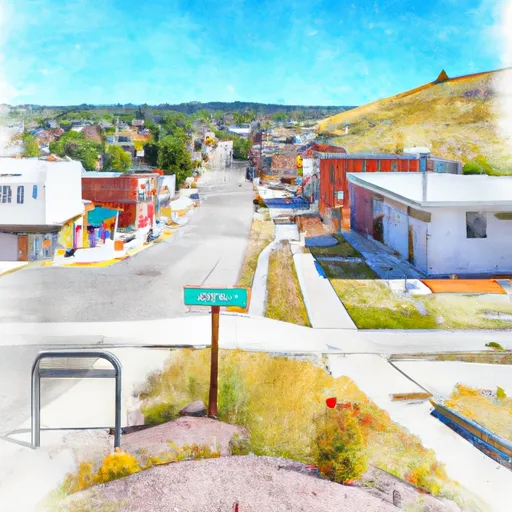-
 Snoflo Premium
Snoflo Premium
Get unlimited access to all our content
With no Ad interruptions! - Start Your Free Trial Login with existing account
Medicine-Bow
Eden Index
Climate
6.2
•
Recreation
•
Community
•
Safeguard
2.5/10

Medicine Bow, Wyoming is a small town located in southeastern Wyoming. The climate in Medicine Bow is classified as a cold semi-arid climate. Winters are long and cold, with average temperatures ranging from 10°F to 30°F (-12°C to -1°C), while summers are short and mild, with temperatures ranging from 60°F to 80°F (15°C to 27°C). The area receives about 20 inches (51 cm) of precipitation annually, with most of it falling as snow during the winter months.
Medicine Bow is home to several hydrology constituents, including the Medicine Bow River, which flows through the southern part of the town. This river provides opportunities for fishing, with a variety of fish species such as brown trout, rainbow trout, and brook trout.
Outdoor recreation opportunities in Medicine Bow are abundant. The town is surrounded by the Medicine Bow National Forest, offering opportunities for hiking, camping, and wildlife viewing. The forest is also known for its excellent hunting and fishing opportunities. Snowmobiling and cross-country skiing are popular winter activities in the area, thanks to the heavy snowfall. Medicine Bow is an ideal destination for nature enthusiasts seeking outdoor adventures in a picturesque setting.
What is the Eden Index?
The Snoflo Eden Index serves as a comprehensive rating system for regions, evaluating their desirability through a holistic assessment of climate health, outdoor recreation opportunities, and natural disaster risk, acknowledging the profound impact of these factors on livability and well-being.
Climate Health Indicator (CHI): 6.2
Medicine-Bow receives approximately
320mm of rain per year,
with humidity levels near 65%
and air temperatures averaging around
5°C.
Medicine-Bow has a plant hardyness factor of
4, meaning
plants and agriculture in this region thrive during a short period during spring and early summer. Most
plants will die off during the colder winter months.
By considering the ideal temperature range, reliable water supplies, clean air, and stable seasonal rain or snowpacks, the Climate Health Indicator (CHI) underscores the significance of a healthy climate as the foundation for quality living.
A healthy climate is paramount for ensuring a high quality of life and livability in a region, fostering both physical well-being and environmental harmony. This can be characterized by ideal temperatures, reliable access to water supplies, clean air, and consistent seasonal rain or snowpacks.
Weather Forecast
Streamflow Conditions
North Platte
Area Rivers
North Platte
Snowpack Depths
North Platte
Reservoir Storage Capacity
North Platte
Groundwater Levels
Recreational Opportunity Index (ROI):
The Recreational Opportunity Index (ROI) recognizes the value of outdoor recreational options, such as parks, hiking trails, camping sites, and fishing spots, while acknowledging that climate plays a pivotal role in ensuring the comfort and consistency of these experiences.
Access to outdoor recreational opportunities, encompassing activities such as parks, hiking, camping, and fishing, is crucial for overall well-being, and the climate plays a pivotal role in enabling and enhancing these experiences, ensuring that individuals can engage in nature-based activities comfortably and consistently.
Camping Areas
| Campground | Campsites | Reservations | Toilets | Showers | Elevation |
|---|---|---|---|---|---|
| East Allen Lake Public Access - WGF | None | 6,552 ft | |||
| Rim | 6 | 8,291 ft | |||
| Beartrap - Casper Mountain Park | None | 7,872 ft | |||
| Deep Creek | 12 | 10,069 ft | |||
| Bow River | 13 | 8,596 ft | |||
| Lodge Pole | 6 | 7,943 ft |
Nearby Fishing
Nearby Ski Areas
Catastrophe Safeguard Index (CSI):
The Catastrophe Safeguard Index (CSI) recognizes that natural disaster risk, encompassing floods, fires, hurricanes, and tornadoes, can drastically affect safety and the overall appeal of an area.
The level of natural disaster risk in a region significantly affects safety and the overall livability, with climate change amplifying these risks by potentially increasing the frequency and intensity of events like floods, fires, hurricanes, and tornadoes, thereby posing substantial challenges to community resilience and well-being.
Community Resilience Indicator (CRI):
The Community Resilience Indicator (CRI) recognizes that education, healthcare, and socioeconomics are crucial to the well-being of a region. The CRI acknowledges the profound impact of these elements on residents' overall quality of life. By evaluating educational resources, healthcare accessibility, and economic inclusivity, the index captures the essential aspects that contribute to a thriving community, fostering resident satisfaction, equity, and social cohesion.

